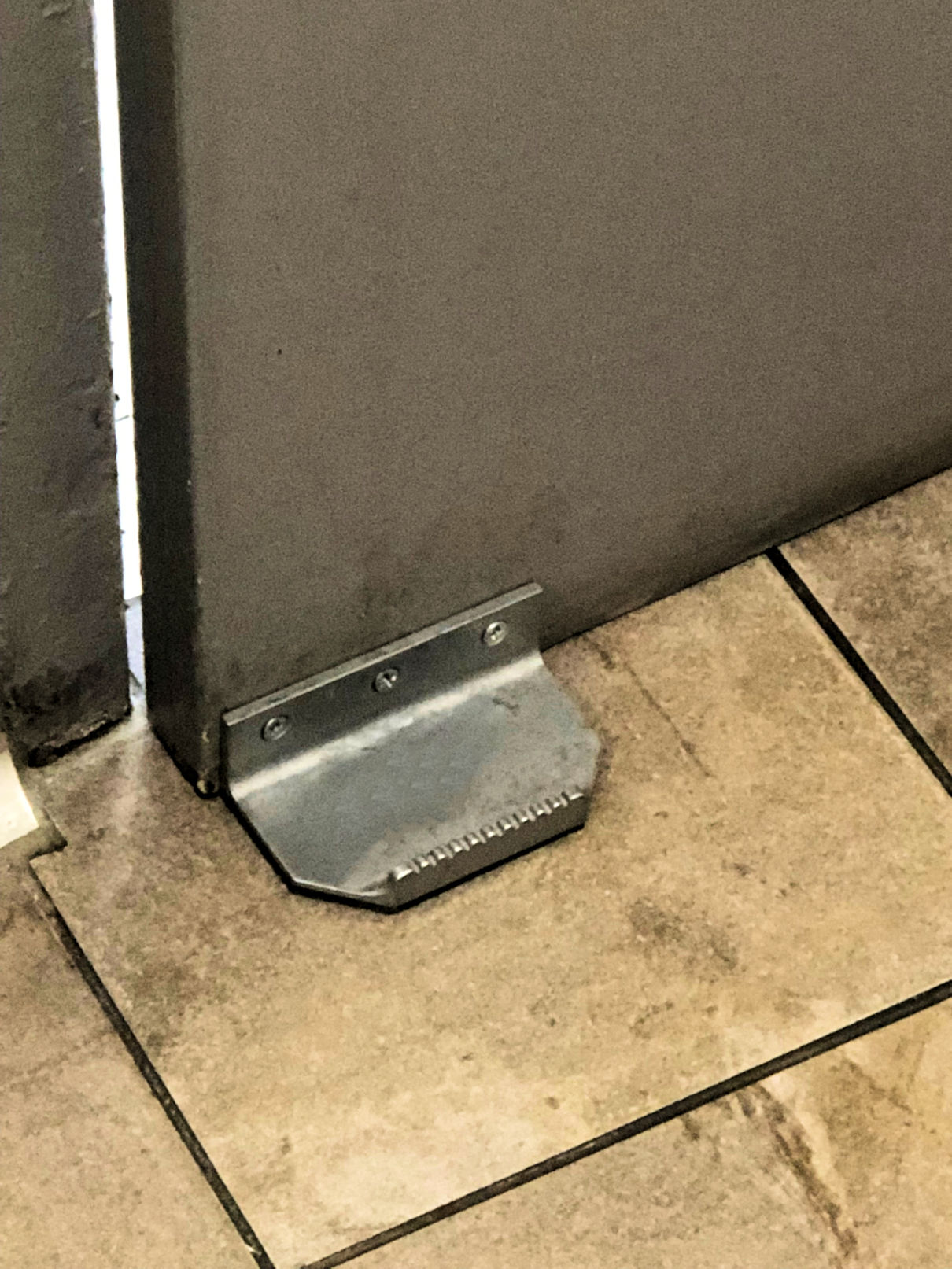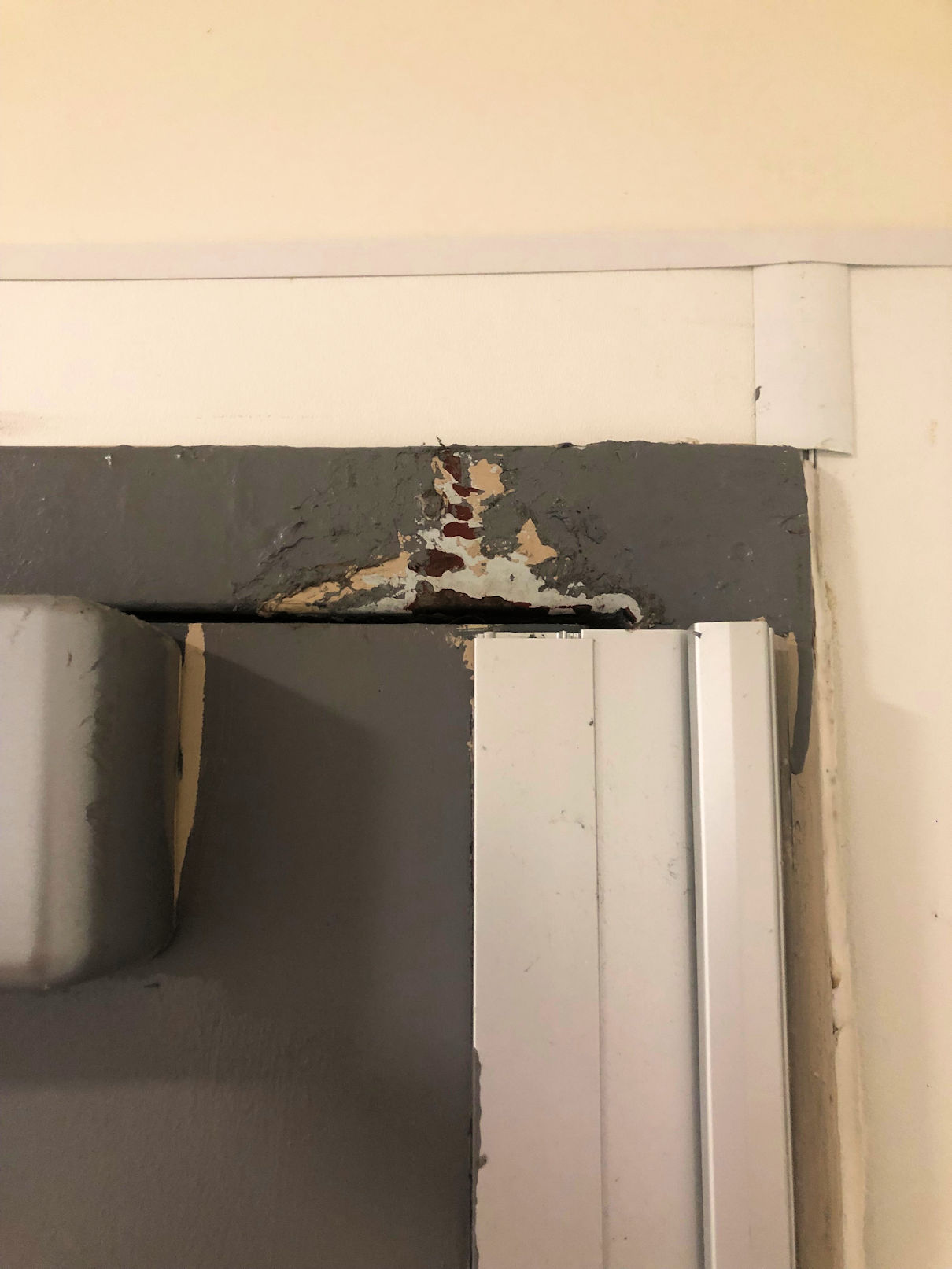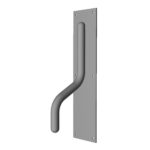During Monday’s drive, I had to stop at a large retail store to buy something that I needed for an upcoming class, and I saw the door below in the women’s restroom. I hate to generalize, but most women’s restrooms are not a hot-spot of vandalism and abuse (there are exceptions). Which made me wonder whether this door, which is dragging on the floor and won’t close fully, was damaged before the foot pull was added, or if the downward force on the foot pull contributed to the problem.
What do you think? Does anyone have any experience with adding foot pulls in high-traffic locations used by the public?
You need to login or register to bookmark/favorite this content.











I’d go with prior damage as being more likely.
The size of the foot pull and its closeness to the floor really doesn’t match well with the amount of force that would be required.
I wonder how much force one needs to pull open the door.
Hope no one is on the push side while someone is trying to pull.
That could hurt.
The cleaning crew probably routinely sticks a broom handle up in the corner of the door 7 buck to keep it open while they clean.
And it looks like even the full-length hinge didn’t stop the drooping.
Downward pressure I think.
Classic. The people that clean the restroom stick their putty knife handle or broom handle over the top of the spine of the door when it is open 90, to hold it open while they clean their way out of the room. Not even a quality continuous hinge can withstand the abuse.
I installed a couple of dozen of those foot pulls in our campus about a year ago, on high traffic doors, and so far I haven’t observed evidence of greater stress on the doors or hinges due to them. (On the other hand, I have also not observed evidence of anyone using the things, either.) I think the comments above regarding non-standard door stops are more likely.
Thanks for sharing your experience, Misha!
– Lori
Well, my guess is that the foot pull did trigger the door failure, which they tried to mitigate by adding the continuous hinge, but it appears the jamb itself is failing.
I believe it is a mixture of both. I have seen where these push down door steps do damage the top hinge reinforcement, especially on wider doors (more fulcrum). I prefer the foot “steps” where you have to pull up with your foot then pull open the door. Way less wear on the top hinge reinforcements.
I don’t think the problem is related to the foot pull.
I agree with the consensus that people are sticking something at the top hinge side corner of the door to hold it open. Doing so can cause issues with both the door and frame.
In this case, either the door itself is damaged, the closer is damaged, or both. The damage has caused the door to be out of square and out of plumb with the frame. This is also why the door makes contact and binding on the frame at the top non-hinge edge, but not at the bottom non-hinge side. There is also a gap between the door and header/frame on the non-hinge side and almost no gap between the door and header/frame on the top hinge side.
An alternate theory is that the door frame is racked. That’s something I see on almost a daily basis where I work, which is caused by building/ground movement.
There is one other thing that caught my eye. The tile under the door pull doesn’t look like it’s flush with the other tiles, particularly along the left side of the tile and the top left corner where it’s notched to fit against the wall. This is often caused by replacing a tile without removing the existing mortar/grout, a poor installation, or a subfloor/foundation that isn’t level. Maybe it has something to do with the problem, and maybe it doesn’t. I’m not sure.
A new closer might help, as might adjusting the continuous hinge. A Hinge Doctor would work wonders if it had leaf hinges.